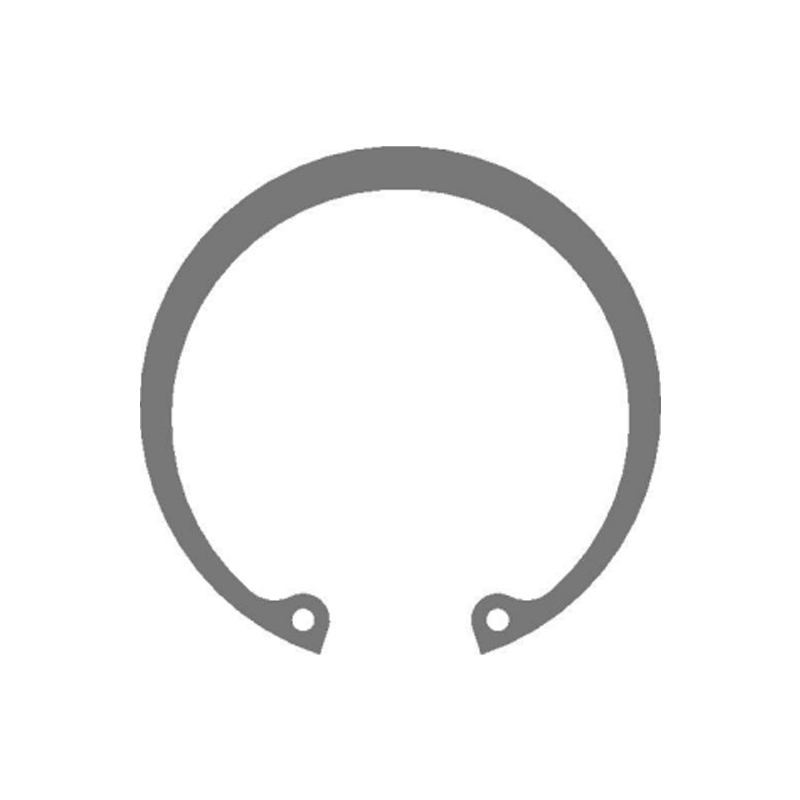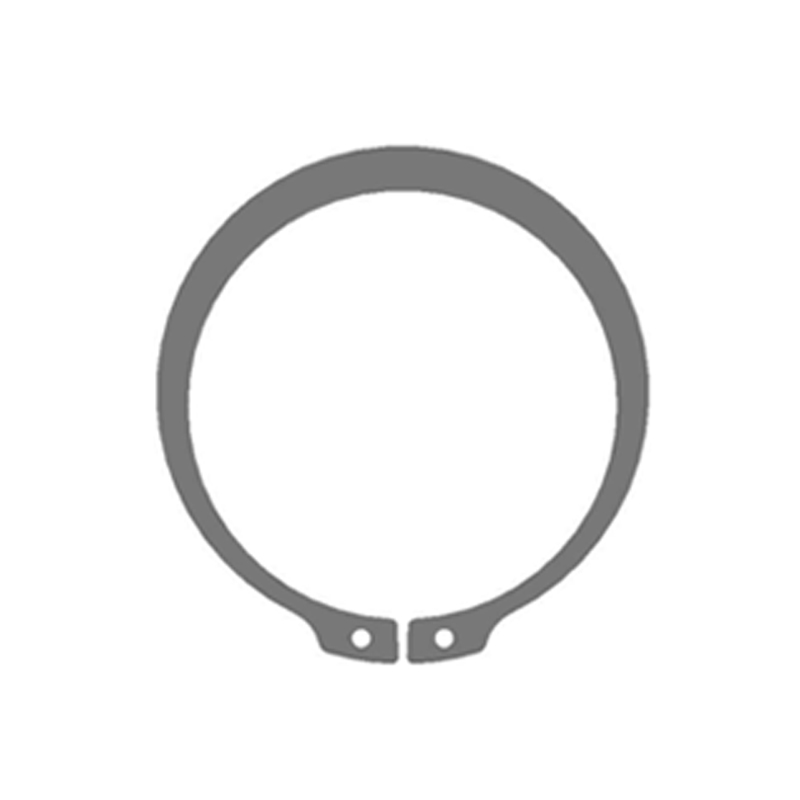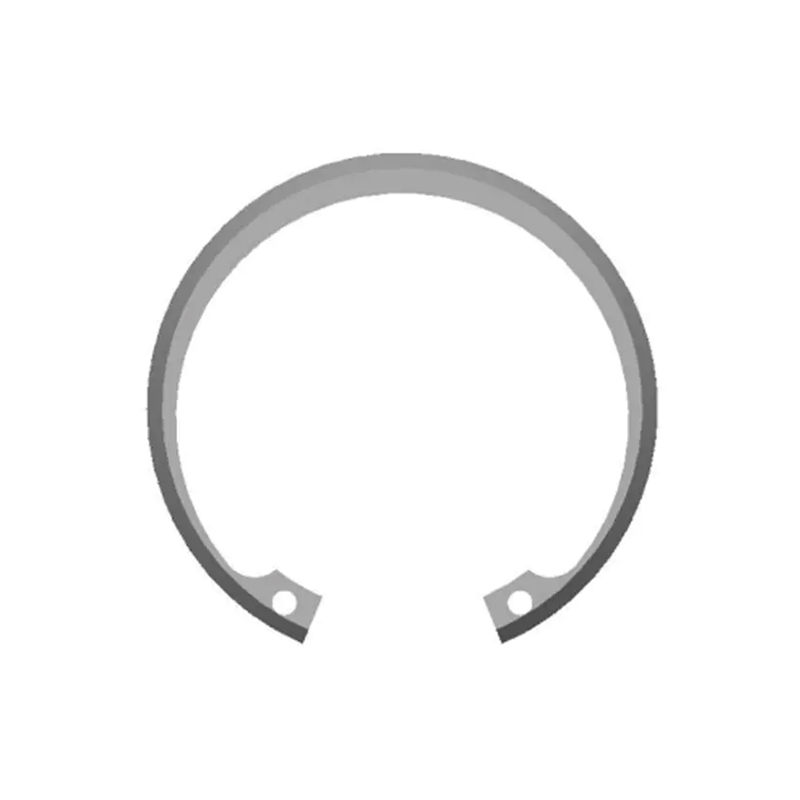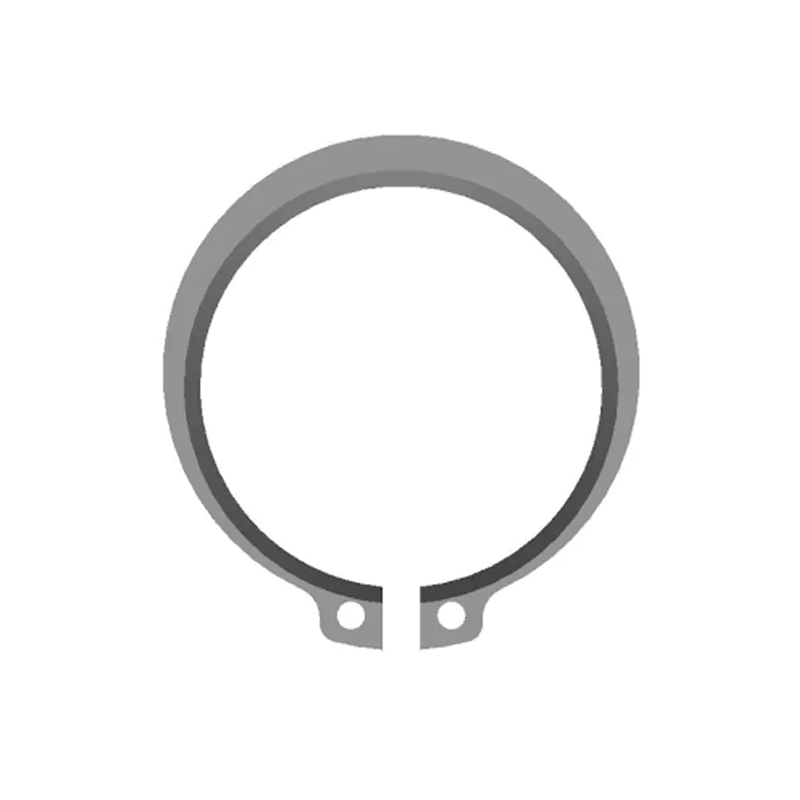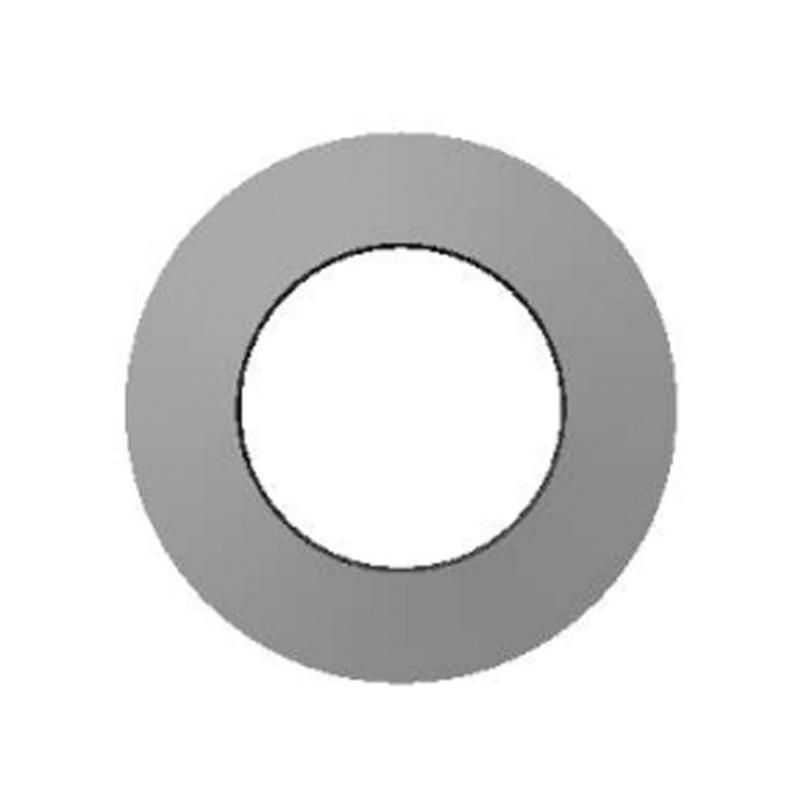In mechanical engineering, the need for reliable axial positioning of components—such as bearings, gears, or pulleys—often calls for solutions that are both compact and easy to assemble. One such component, though often overlooked due to its simplicity, is the external circlip. But what makes an external circlip such a valuable element in the design of rotating and non-rotating assemblies, and why is it still widely used in precision manufacturing today?
An external circlip, also referred to as a retaining ring or snap ring, is a semi-flexible metal ring designed to be mounted in a groove on the outside diameter of a shaft. Once installed, it acts as a mechanical stop, preventing lateral movement of components along the shaft. Its unique profile—typically a flat, C-shaped spring steel section—allows it to expand slightly during installation and then snap back into a machined groove to form a secure, load-bearing barrier.
The structural simplicity of the circlip belies its mechanical efficiency. When properly selected and installed, external circlips can withstand significant axial loads without the need for complex threaded fasteners or locking mechanisms. This makes them ideal for compact designs where space is constrained and weight minimization is important.
Material selection plays a critical role in the performance of circlips. Most industrial-grade circlips are manufactured from hardened carbon spring steel, which offers high tensile strength, fatigue resistance, and durability under cyclic loading. In applications requiring corrosion resistance or non-magnetic properties, stainless steel (such as 420 or 316 grades) or special alloys like beryllium copper are also employed. Surface treatments—including phosphate coating, zinc plating, or passivation—are often applied to enhance wear resistance and environmental durability.

In terms of function, external circlips offer a number of engineering advantages:
-
Axial Load Retention: Once seated in the groove, the circlip acts as a positive mechanical stop, capable of holding components under considerable axial load without slippage.
-
Quick Assembly and Disassembly: Installation using circlip pliers is fast and tool-controlled, reducing assembly time and maintenance effort.
-
Space and Weight Efficiency: Compared to bolts, washers, or other retention methods, circlips occupy minimal radial and axial space.
-
Cost-Effectiveness: Due to their simple geometry and mass production compatibility, circlips are a highly economical solution for large-scale manufacturing.
External circlips are widely used in automotive systems, industrial machinery, aerospace mechanisms, gear assemblies, and consumer appliances. In automotive transmissions, for example, they secure rotating elements like synchronizer hubs or gear clusters. In electric motors, they retain bearings and shaft-mounted components. Because of their ease of installation, they are also frequently used in DIY repair kits and equipment assemblies where serviceability is a priority.
However, proper groove design and installation technique are essential for reliable performance. The groove must be machined with precise tolerances for diameter, depth, and surface finish to avoid issues such as dislodgement or uneven loading. Additionally, the circlip must be selected based on shaft size, groove specification (conforming to DIN 471 or ISO 8752 standards), and required axial load capacity. Overstretching the circlip during installation or repeated reuse can lead to permanent deformation, loss of spring force, and eventual failure.
Another key consideration is the dynamic performance of circlips in rotating systems. In high-speed or high-vibration environments, retaining rings must maintain position without causing imbalance or fatigue in the shaft. This has led to the development of specialty circlips with self-locking features or reduced mass geometries, optimized for rotational stability.
In recent years, the role of circlips has expanded with the development of automated assembly lines and mechatronic systems. Pre-assembled circlip kits, robotic-compatible installation tools, and digital groove measurement systems are now part of quality-controlled production processes. Despite the rise of more complex locking devices, external circlips continue to be favored in high-volume manufacturing due to their repeatability, low cost, and mechanical reliability.




